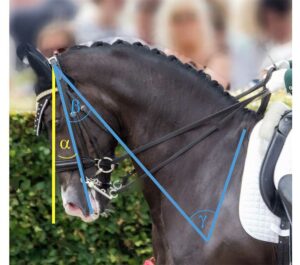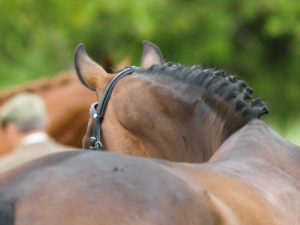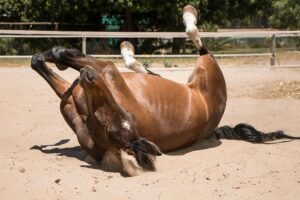Equine Head Flexion and Airway Inflammation (AAEP 2011)
Sure, you can watch an exercising horse’s airways with an endoscope while he’s on a treadmill, but this technique does not account for travel over varying terrain or for the influences of rider intervention on his respiratory efficiency. At the 2011 American Association of Equine Practitioners convention, held Nov. 18-22 in San Antonio, Texas, Emmanuelle van Erck-Westergren, DVM, PhD, Dipl. ECEIM, of Equine Sports Medicine Practice in Belgium, presented a study on upper airway function using videoendoscopy on ridden horses.
She explained that in racehorses and sport horses, duplication of the circumstances in which upper airway problems occur is important for establishing a diagnosis and proposing an appropriate treatment to maximize a horse’s performance. Respiratory noise occurs as a result of upper airway obstruction (UAO), which might lead to decreased performance and reduction in the horse’s commercial value. But this noise has rarely been examined in horses that are exercising off the treadmill and with riders.
Van Erck-Westergren investigated the effect of head flexion and rider interference on the upper airways. The study involved 129 show jumpers and dressage horses with an average age of 6 ½ years. Owner complaints ranged from respiratory noise, poor performance, and cough to epistaxis (nose bleeds) and headshaking. The ridden exercise test was performed at the walk, trot, and canter on both leads for 15 minutes or until each horse showed signs of fatigue or displayed typical clinical signs. Each horse, ridden by his usually rider, was asked to work with the head free, then with increasing poll flexion with rider contact and skill sets.
She examined the horses via endoscopy at rest as well as during exercise (because many horses with problems might appear normal at rest) to evaluate the presence and degree of upper airway obstruction. They identified UAO in 106 of 129 horses during dynamic endoscopy, with 80 horses appearing normal at rest. Two-thirds of these horses had multiple causes of UAO. Van Erck-Westergren reported that, surprisingly, half of the control group of horses with no clinical complaints demonstrated some degree of upper airway (mainly pharyngeal wall) instability or obstruction during the dynamic exam. Almost all horses had airway inflammation, such as pharyngeal lymphoid hyperplasia (pharynx enlargement of the lymphoid follicles, 87/129) or inflammatory airway disease (IAD in 56/66)
Create a free account with TheHorse.com to view this content.
TheHorse.com is home to thousands of free articles about horse health care. In order to access some of our exclusive free content, you must be signed into TheHorse.com.
Start your free account today!
Already have an account?
and continue reading.

Written by:
Nancy S. Loving, DVM
Related Articles
Stay on top of the most recent Horse Health news with



















